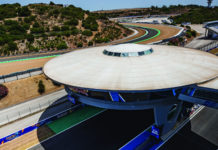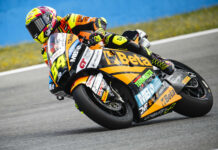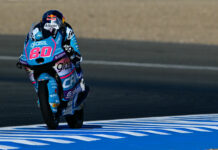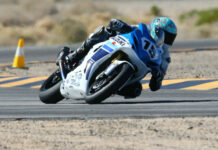POWER SURGE FOR SUPERBIKES TORONTO, ON Engine tuners in the Parts Canada Superbike Championship have received an early Christmas present from series technical officials. For the 2006 season, maximum horsepower limits have been increased by 10hp in both the Parts Canada Superbike feature class and the Hindle Exhaust Pro 600 Sport Bike national support category. The limit for Superbike is now 180hp while Pro 600 Sport Bike goes up to 125hp. Horsepower in both classes is measured post-race on the series official Dynojet Dyno. “Motorcycle evolution continues at a frantic pace,” said Colin Fraser of series organizer Professional Motorsports Productions. “Our rules should keep step with new developments while still honouring the concept of affordable and accessible racing that forms the basis of our series.” Minimum weights in both classes remain unchanged for next season 360 lbs. in Superbike and 350 lbs. in Pro 600 Sport Bike. The increases in horsepower limits are among several rules changes for the classes that make up the Parts Canada Superbike Championship. Maximum horsepower has also been adjusted in the International Motorcycle SUPERSHOW Amateur 600 Sport Bike division, although not as dramatically as in the Pro 600 class. After careful consideration of competitor input, series officials have bumped the limit up 3hp to 118. In a significant development, the series will implement a fresh concept for the Canadian Thunder class. The twins category will use a sliding scale based on a weight to power ratio of 3.8:1. In the Suzuki SV650 National Cup, horsepower remains capped at 75hp and minimum weight stays at 365 lbs. Both the Pro and Amateur 600 Sport Bike classes have been opened up to include twins of up to 750cc, making the Ducati 749 two-cylinder eligible. Homologation requirements have also been set through 2008. For Japanese manufacturers, 100 units per year of a particular model must be produced to make a motorcycle eligible for the Canadian national series. For non-Japanese manufacturers that number is 10 units per year, but the constructor must apply for committee approval before the particular model will be accepted. There have also been changes to the 600 Sport Bike regulations for next season, all designed to keep the bikes as close as possible to their stock form. Triple clamps, shock linkage, gas cap, battery, starter and charging system must all be O.E. (original equipment) stock. Steering head inserts and fork braces are no longer allowed. Additionally, the ignition and ECU must be stock, made by the O.E.M. as kit, or produced for consumer use by Dynojet Research. “What was considered a major performance add-on not too long ago is now stock equipment on these bikes,” Fraser pointed out, “and there is no longer a need to allow as much modification.” After much debate, “quick-shifters” are still not eligible for the Parts Canada Superbike series. Data acquisition for chassis or suspension is no longer approved for any of the national classes, and all machines must meet a 106dB noise limit and employ effective silencing (i.e. no straight pipes). For more series information, visit www.cdnsuperbike.com
© , Roadracing World Publishing, Inc.






